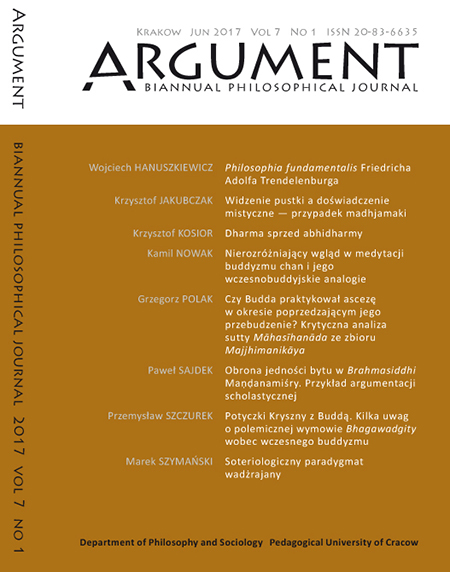Obrona jedności bytu w Brahmasiddhi Maṇḍanamiśry. Przykład argumentacji scholastycznej
DOI:
https://doi.org/10.24917/20841043.7.1.7Keywords:
Indian philosophy, Advaita, Maṇḍana, Brahmasiddhi, unity, scholasticismAbstract
A defense of the unity of being in the Brahmasiddhi of Manḍanamiśra. An example of scholastic argumentation: Chāndogyopaniṣad 6 comprises as many as two out of six renowned “great sayings” (mahā-vākya): tat tvam asi and ekam evādvitīyam. The question arises as to whether the declared in śruti unity of the Absolute Being is to be understood literally or figuratively. The opponent (pūrva-pakṣa) presents three arguments for the figurative meaning of the words. Maṇḍana advocates the literal sense of the statement. The debate is a typical example of an Indian philosophical scholastic text. Scholasticism in India and scholasticism in medieval Europe share some characteristic features, though they also differ in many ways.


